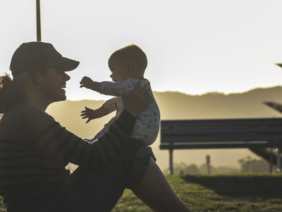
Adoption stories depict a wide variety of outcomes for different people
By: Kelechi Obasi
A quick Google search for “adoption” yields a slew of results with various facts and information on the subject, ranging from how long adoption takes in major cities to the stress and high cost involved in the adoption process.
Despite how much information is readily available, there appears to be secrecy involving the practice of families adopting a child. This is demonstrated by a large number of people who argue that adopting is a bad idea for a variety of reasons. Such reasons include doubts about a mother’s decision to place her biological offspring for adoption, fear of not being able to express the same level of care for an adopted child, and concerns about poor academic and behavioural concerns that may come with raising children who are not biological.
Similarly, numerous adoption horror stories litter the landscape of parents and families attempting to bring new children into their homes and nurture them as members of their families. They express dissatisfaction about the length of time it takes to start and finish the adoption process.
According to the Ontario Association of Children’s Aid Society, there are multiple checkpoints that parents must complete during the adoption process, including being on a waitlist for PRIDE training and the completion of a SAFE home assessment that evaluates a home’s safety. It’s possible that the average wait time will be a year.

Samantha’s Story
However, one woman, whom we will call Samantha to protect her privacy, has successfully completed the adoption process and offers a different narrative about her experience. Her story reads as if it could only have come from her.
Samantha experienced a few miscarriages, at almost forty years old, she wasn’t willing to take any more chances. Like many other women, she selected adoption as a method of child-rearing. “I opted not to support the fertility machine,” she revealed. “Then my husband and I spoke about it, and we started looking for adoption [in] 2010.”
Adoption is viable in Canada and could be done in one of three ways: through Children’s Aid, private adoption, or international adoption. Samantha considered the advantages and disadvantages of each of these options. Given that she and her spouse were in their early and mid-forties, and were only children of already elderly matrons, they did not wish to battle with the money required to effectively support a child with special needs over time.
This effectively narrowed their search to international adoption. They looked far and wide, even across continents, for viable options to complete the procedure. In some nations, they were forced to join a seven-year waitlist of parents and families who were looking for asylum. Other roadblocks came in the form of religious restrictions, and some countries established priority lists that required only their citizens at home and abroad to apply.
In some other parts of the world, there were regulatory or infrastructure issues that made it even more difficult to adopt, as well as stories of agencies collecting up to $20,000 upfront payments from interested families and diverting those funds to expensive home upgrades and personal luxury items.
The United States, which did not appear to be an apparent choice at the time, would turn out to be the very place where they would adopt a child.
From Samantha: “We were looking at this map and knew there were youngsters, but it appeared to be a difficult task. When we were discussing these challenges with our social worker, he wondered whether we had considered the United States. That surprised us since we had assumed that people from the United States were also [adopted] in China and Africa, and we had never heard of Canadians adopting from the United States.

There were not many organizations offering adoption services from the United States. After cold-calling and leaving several messages, many never returned calls; the places who did call back demanded a large sum of money upfront. After making one phone call and filling out a form, the couple had to go home and write their life narrative and put it all in a book because, like in Canada, the birth mother picks the family who would adopt the child.
The events that followed were so fast-paced that they couldn’t keep their brains from spinning. The birth mother, who was expected to give birth in a few weeks, chose them from a pool of potential adoptive parents and requested that they be present in the delivery room to meet the new baby. They arrived at the hospital ward four hours after the child was delivered. Fast forward to now – that baby has been Samantha and her husband’s daughter for the past twelve years.
The Stigmas of Adoption
Many critics of existing adoption practices point to Samantha’s experience as a set of factors that make adoption a less-than-viable option for many.
They swiftly point out that these services are underutilized and that people are unaware of them. The exorbitant cost of being an adoptive parent, the years-long wait times, the uncertainty surrounding the child’s outcomes, and concerns about compatibility with the parents are all deterrents to ordinary people who want children.
They also bring out an important concern that social science evidence seems to support: adopted children are more likely to fail in school, both academically and behaviourally. They claim that these and other examples of “soft stigma” still exist in the adoption community, particularly when it comes to interracial adoptions.
This could hardly be further from the truth for Samantha, who participated in an interracial adoption. “I believe that rather than a stigma, people make assumptions about adoption, and most of those assumptions are incorrect. On the one hand, you get folks who think you’re a saviour or that you’ve done something charitable, which I find patronizing,” says Samantha. “I am not the one who saved this child; she saved me.”
Samantha continues with this: “You have to recognize that adoptive families have come together as a result of loss on the part of the kid, the biological parents, and the adoptive parents. That trauma must be recognized, and there must be some room for it to heal. Based on the circumstances, it necessitates openness and connection with and between all people involved.”
In the Institute for Family Studies, Samantha finds an ally. “Even if social science evidence reveals the obstacles faced by adopted children, the [institute] thinks: we must take care to distinguish adoption itself from the circumstances that led to the need for adoption.”




